Home Healthcare Equipment
Home Healthcare Software
Home Telehealth Services
Home Nursing Services
Patients
Caregivers
Healthcare Providers
Insurance Companies
Chronic Disease Management
Post-Acute Care
Palliative Care
Rehabilitation
Telemedicine
Remote Patient Monitoring
Mobile Health Applications
Electronic Health Records
North America
Europe
South America
Asia Pacific
Middle East and Africa
North America Outlook (USD Billion, 2019-2035)
North America Home Health Care Industry by Type of Service Type
Home Healthcare Equipment
Home Healthcare Software
Home Telehealth Services
Home Nursing Services
North America Home Health Care Industry by End User Type
Patients
Caregivers
Healthcare Providers
Insurance Companies
North America Home Health Care Industry by Care Setting Type
Chronic Disease Management
Post-Acute Care
Palliative Care
Rehabilitation
North America Home Health Care Industry by Technology Type
Telemedicine
Remote Patient Monitoring
Mobile Health Applications
Electronic Health Records
North America Home Health Care Industry by Regional Type
US
Canada
US Outlook (USD Billion, 2019-2035)
US Home Health Care Industry by Type of Service Type
Home Healthcare Equipment
Home Healthcare Software
Home Telehealth Services
Home Nursing Services
US Home Health Care Industry by End User Type
Patients
Caregivers
Healthcare Providers
Insurance Companies
US Home Health Care Industry by Care Setting Type
Chronic Disease Management
Post-Acute Care
Palliative Care
Rehabilitation
US Home Health Care Industry by Technology Type
Telemedicine
Remote Patient Monitoring
Mobile Health Applications
Electronic Health Records
CANADA Outlook (USD Billion, 2019-2035)
CANADA Home Health Care Industry by Type of Service Type
Home Healthcare Equipment
Home Healthcare Software
Home Telehealth Services
Home Nursing Services
CANADA Home Health Care Industry by End User Type
Patients
Caregivers
Healthcare Providers
Insurance Companies
CANADA Home Health Care Industry by Care Setting Type
Chronic Disease Management
Post-Acute Care
Palliative Care
Rehabilitation
CANADA Home Health Care Industry by Technology Type
Telemedicine
Remote Patient Monitoring
Mobile Health Applications
Electronic Health Records
Europe Outlook (USD Billion, 2019-2035)
Europe Home Health Care Industry by Type of Service Type
Home Healthcare Equipment
Home Healthcare Software
Home Telehealth Services
Home Nursing Services
Europe Home Health Care Industry by End User Type
Patients
Caregivers
Healthcare Providers
Insurance Companies
Europe Home Health Care Industry by Care Setting Type
Chronic Disease Management
Post-Acute Care
Palliative Care
Rehabilitation
Europe Home Health Care Industry by Technology Type
Telemedicine
Remote Patient Monitoring
Mobile Health Applications
Electronic Health Records
Europe Home Health Care Industry by Regional Type
Germany
UK
France
Russia
Italy
Spain
Rest of Europe
GERMANY Outlook (USD Billion, 2019-2035)
GERMANY Home Health Care Industry by Type of Service Type
Home Healthcare Equipment
Home Healthcare Software
Home Telehealth Services
Home Nursing Services
GERMANY Home Health Care Industry by End User Type
Patients
Caregivers
Healthcare Providers
Insurance Companies
GERMANY Home Health Care Industry by Care Setting Type
Chronic Disease Management
Post-Acute Care
Palliative Care
Rehabilitation
GERMANY Home Health Care Industry by Technology Type
Telemedicine
Remote Patient Monitoring
Mobile Health Applications
Electronic Health Records
UK Outlook (USD Billion, 2019-2035)
UK Home Health Care Industry by Type of Service Type
Home Healthcare Equipment
Home Healthcare Software
Home Telehealth Services
Home Nursing Services
UK Home Health Care Industry by End User Type
Patients
Caregivers
Healthcare Providers
Insurance Companies
UK Home Health Care Industry by Care Setting Type
Chronic Disease Management
Post-Acute Care
Palliative Care
Rehabilitation
UK Home Health Care Industry by Technology Type
Telemedicine
Remote Patient Monitoring
Mobile Health Applications
Electronic Health Records
FRANCE Outlook (USD Billion, 2019-2035)
FRANCE Home Health Care Industry by Type of Service Type
Home Healthcare Equipment
Home Healthcare Software
Home Telehealth Services
Home Nursing Services
FRANCE Home Health Care Industry by End User Type
Patients
Caregivers
Healthcare Providers
Insurance Companies
FRANCE Home Health Care Industry by Care Setting Type
Chronic Disease Management
Post-Acute Care
Palliative Care
Rehabilitation
FRANCE Home Health Care Industry by Technology Type
Telemedicine
Remote Patient Monitoring
Mobile Health Applications
Electronic Health Records
RUSSIA Outlook (USD Billion, 2019-2035)
RUSSIA Home Health Care Industry by Type of Service Type
Home Healthcare Equipment
Home Healthcare Software
Home Telehealth Services
Home Nursing Services
RUSSIA Home Health Care Industry by End User Type
Patients
Caregivers
Healthcare Providers
Insurance Companies
RUSSIA Home Health Care Industry by Care Setting Type
Chronic Disease Management
Post-Acute Care
Palliative Care
Rehabilitation
RUSSIA Home Health Care Industry by Technology Type
Telemedicine
Remote Patient Monitoring
Mobile Health Applications
Electronic Health Records
ITALY Outlook (USD Billion, 2019-2035)
ITALY Home Health Care Industry by Type of Service Type
Home Healthcare Equipment
Home Healthcare Software
Home Telehealth Services
Home Nursing Services
ITALY Home Health Care Industry by End User Type
Patients
Caregivers
Healthcare Providers
Insurance Companies
ITALY Home Health Care Industry by Care Setting Type
Chronic Disease Management
Post-Acute Care
Palliative Care
Rehabilitation
ITALY Home Health Care Industry by Technology Type
Telemedicine
Remote Patient Monitoring
Mobile Health Applications
Electronic Health Records
SPAIN Outlook (USD Billion, 2019-2035)
SPAIN Home Health Care Industry by Type of Service Type
Home Healthcare Equipment
Home Healthcare Software
Home Telehealth Services
Home Nursing Services
SPAIN Home Health Care Industry by End User Type
Patients
Caregivers
Healthcare Providers
Insurance Companies
SPAIN Home Health Care Industry by Care Setting Type
Chronic Disease Management
Post-Acute Care
Palliative Care
Rehabilitation
SPAIN Home Health Care Industry by Technology Type
Telemedicine
Remote Patient Monitoring
Mobile Health Applications
Electronic Health Records
REST OF EUROPE Outlook (USD Billion, 2019-2035)
REST OF EUROPE Home Health Care Industry by Type of Service Type
Home Healthcare Equipment
Home Healthcare Software
Home Telehealth Services
Home Nursing Services
REST OF EUROPE Home Healthcare Market by End User Type
Patients
Caregivers
Healthcare Providers
Insurance Companies
REST OF EUROPE Home Healthcare Market by Care Setting Type
Chronic Disease Management
Post-Acute Care
Palliative Care
Rehabilitation
REST OF EUROPE Home Healthcare Market by Technology Type
Telemedicine
Remote Patient Monitoring
Mobile Health Applications
Electronic Health Records
APAC Outlook (USD Billion, 2019-2035)
APAC Home Healthcare Market by Type of Service Type
Home Healthcare Equipment
Home Healthcare Software
Home Telehealth Services
Home Nursing Services
APAC Home Healthcare Market by End User Type
Patients
Caregivers
Healthcare Providers
Insurance Companies
APAC Home Healthcare Market by Care Setting Type
Chronic Disease Management
Post-Acute Care
Palliative Care
Rehabilitation
APAC Home Healthcare Market by Technology Type
Telemedicine
Remote Patient Monitoring
Mobile Health Applications
Electronic Health Records
APAC Home Healthcare Market by Regional Type
China
India
Japan
South Korea
Malaysia
Thailand
Indonesia
Rest of APAC
CHINA Outlook (USD Billion, 2019-2035)
CHINA Home Healthcare Market by Type of Service Type
Home Healthcare Equipment
Home Healthcare Software
Home Telehealth Services
Home Nursing Services
CHINA Home Healthcare Market by End User Type
Patients
Caregivers
Healthcare Providers
Insurance Companies
CHINA Home Healthcare Market by Care Setting Type
Chronic Disease Management
Post-Acute Care
Palliative Care
Rehabilitation
CHINA Home Healthcare Market by Technology Type
Telemedicine
Remote Patient Monitoring
Mobile Health Applications
Electronic Health Records
INDIA Outlook (USD Billion, 2019-2035)
INDIA Home Healthcare Market by Type of Service Type
Home Healthcare Equipment
Home Healthcare Software
Home Telehealth Services
Home Nursing Services
INDIA Home Healthcare Market by End User Type
Patients
Caregivers
Healthcare Providers
Insurance Companies
INDIA Home Healthcare Market by Care Setting Type
Chronic Disease Management
Post-Acute Care
Palliative Care
Rehabilitation
INDIA Home Healthcare Market by Technology Type
Telemedicine
Remote Patient Monitoring
Mobile Health Applications
Electronic Health Records
JAPAN Outlook (USD Billion, 2019-2035)
JAPAN Home Healthcare Market by Type of Service Type
Home Healthcare Equipment
Home Healthcare Software
Home Telehealth Services
Home Nursing Services
JAPAN Home Healthcare Market by End User Type
Patients
Caregivers
Healthcare Providers
Insurance Companies
JAPAN Home Healthcare Market by Care Setting Type
Chronic Disease Management
Post-Acute Care
Palliative Care
Rehabilitation
JAPAN Home Healthcare Market by Technology Type
Telemedicine
Remote Patient Monitoring
Mobile Health Applications
Electronic Health Records
SOUTH KOREA Outlook (USD Billion, 2019-2035)
SOUTH KOREA Home Healthcare Market by Type of Service Type
Home Healthcare Equipment
Home Healthcare Software
Home Telehealth Services
Home Nursing Services
SOUTH KOREA Home Healthcare Market by End User Type
Patients
Caregivers
Healthcare Providers
Insurance Companies
SOUTH KOREA Home Healthcare Market by Care Setting Type
Chronic Disease Management
Post-Acute Care
Palliative Care
Rehabilitation
SOUTH KOREA Home Healthcare Market by Technology Type
Telemedicine
Remote Patient Monitoring
Mobile Health Applications
Electronic Health Records
MALAYSIA Outlook (USD Billion, 2019-2035)
MALAYSIA Home Healthcare Market by Type of Service Type
Home Healthcare Equipment
Home Healthcare Software
Home Telehealth Services
Home Nursing Services
MALAYSIA Home Healthcare Market by End User Type
Patients
Caregivers
Healthcare Providers
Insurance Companies
MALAYSIA Home Healthcare Market by Care Setting Type
Chronic Disease Management
Post-Acute Care
Palliative Care
Rehabilitation
MALAYSIA Home Healthcare Market by Technology Type
Telemedicine
Remote Patient Monitoring
Mobile Health Applications
Electronic Health Records
THAILAND Outlook (USD Billion, 2019-2035)
THAILAND Home Healthcare Market by Type of Service Type
Home Healthcare Equipment
Home Healthcare Software
Home Telehealth Services
Home Nursing Services
THAILAND Home Healthcare Market by End User Type
Patients
Caregivers
Healthcare Providers
Insurance Companies
THAILAND Home Healthcare Market by Care Setting Type
Chronic Disease Management
Post-Acute Care
Palliative Care
Rehabilitation
THAILAND Home Healthcare Market by Technology Type
Telemedicine
Remote Patient Monitoring
Mobile Health Applications
Electronic Health Records
INDONESIA Outlook (USD Billion, 2019-2035)
INDONESIA Home Healthcare Market by Type of Service Type
Home Healthcare Equipment
Home Healthcare Software
Home Telehealth Services
Home Nursing Services
INDONESIA Home Healthcare Market by End User Type
Patients
Caregivers
Healthcare Providers
Insurance Companies
INDONESIA Home Healthcare Market by Care Setting Type
Chronic Disease Management
Post-Acute Care
Palliative Care
Rehabilitation
INDONESIA Home Healthcare Market by Technology Type
Telemedicine
Remote Patient Monitoring
Mobile Health Applications
Electronic Health Records
REST OF APAC Outlook (USD Billion, 2019-2035)
REST OF APAC Home Healthcare Market by Type of Service Type
Home Healthcare Equipment
Home Healthcare Software
Home Telehealth Services
Home Nursing Services
REST OF APAC Home Healthcare Market by End User Type
Patients
Caregivers
Healthcare Providers
Insurance Companies
REST OF APAC Home Healthcare Market by Care Setting Type
Chronic Disease Management
Post-Acute Care
Palliative Care
Rehabilitation
REST OF APAC Home Healthcare Market by Technology Type
Telemedicine
Remote Patient Monitoring
Mobile Health Applications
Electronic Health Records
South America Outlook (USD Billion, 2019-2035)
South America Home Healthcare Market by Type of Service Type
Home Healthcare Equipment
Home Healthcare Software
Home Telehealth Services
Home Nursing Services
South America Home Healthcare Market by End User Type
Patients
Caregivers
Healthcare Providers
Insurance Companies
South America Home Healthcare Market by Care Setting Type
Chronic Disease Management
Post-Acute Care
Palliative Care
Rehabilitation
South America Home Healthcare Market by Technology Type
Telemedicine
Remote Patient Monitoring
Mobile Health Applications
Electronic Health Records
South America Home Healthcare Market by Regional Type
Brazil
Mexico
Argentina
Rest of South America
BRAZIL Outlook (USD Billion, 2019-2035)
BRAZIL Home Healthcare Market by Type of Service Type
Home Healthcare Equipment
Home Healthcare Software
Home Telehealth Services
Home Nursing Services
BRAZIL Home Healthcare Market by End User Type
Patients
Caregivers
Healthcare Providers
Insurance Companies
BRAZIL Home Healthcare Market by Care Setting Type
Chronic Disease Management
Post-Acute Care
Palliative Care
Rehabilitation
BRAZIL Home Healthcare Market by Technology Type
Telemedicine
Remote Patient Monitoring
Mobile Health Applications
Electronic Health Records
MEXICO Outlook (USD Billion, 2019-2035)
MEXICO Home Healthcare Market by Type of Service Type
Home Healthcare Equipment
Home Healthcare Software
Home Telehealth Services
Home Nursing Services
MEXICO Home Healthcare Market by End User Type
Patients
Caregivers
Healthcare Providers
Insurance Companies
MEXICO Home Healthcare Market by Care Setting Type
Chronic Disease Management
Post-Acute Care
Palliative Care
Rehabilitation
MEXICO Home Healthcare Market by Technology Type
Telemedicine
Remote Patient Monitoring
Mobile Health Applications
Electronic Health Records
ARGENTINA Outlook (USD Billion, 2019-2035)
ARGENTINA Home Healthcare Market by Type of Service Type
Home Healthcare Equipment
Home Healthcare Software
Home Telehealth Services
Home Nursing Services
ARGENTINA Home Healthcare Market by End User Type
Patients
Caregivers
Healthcare Providers
Insurance Companies
ARGENTINA Home Healthcare Market by Care Setting Type
Chronic Disease Management
Post-Acute Care
Palliative Care
Rehabilitation
ARGENTINA Home Healthcare Market by Technology Type
Telemedicine
Remote Patient Monitoring
Mobile Health Applications
Electronic Health Records
REST OF SOUTH AMERICA Outlook (USD Billion, 2019-2035)
REST OF SOUTH AMERICA Home Healthcare Market by Type of Service Type
Home Healthcare Equipment
Home Healthcare Software
Home Telehealth Services
Home Nursing Services
REST OF SOUTH AMERICA Home Healthcare Market by End User Type
Patients
Caregivers
Healthcare Providers
Insurance Companies
REST OF SOUTH AMERICA Home Healthcare Market by Care Setting Type
Chronic Disease Management
Post-Acute Care
Palliative Care
Rehabilitation
REST OF SOUTH AMERICA Home Healthcare Market by Technology Type
Telemedicine
Remote Patient Monitoring
Mobile Health Applications
Electronic Health Records
MEA Outlook (USD Billion, 2019-2035)
MEA Home Healthcare Market by Type of Service Type
Home Healthcare Equipment
Home Healthcare Software
Home Telehealth Services
Home Nursing Services
MEA Home Healthcare Market by End User Type
Patients
Caregivers
Healthcare Providers
Insurance Companies
MEA Home Healthcare Market by Care Setting Type
Chronic Disease Management
Post-Acute Care
Palliative Care
Rehabilitation
MEA Home Healthcare Market by Technology Type
Telemedicine
Remote Patient Monitoring
Mobile Health Applications
Electronic Health Records
MEA Home Healthcare Market by Regional Type
GCC Countries
South Africa
Rest of MEA
GCC COUNTRIES Outlook (USD Billion, 2019-2035)
GCC COUNTRIES Home Healthcare Market by Type of Service Type
Home Healthcare Equipment
Home Healthcare Software
Home Telehealth Services
Home Nursing Services
GCC COUNTRIES Home Healthcare Market by End User Type
Patients
Caregivers
Healthcare Providers
Insurance Companies
GCC COUNTRIES Home Healthcare Market by Care Setting Type
Chronic Disease Management
Post-Acute Care
Palliative Care
Rehabilitation
GCC COUNTRIES Home Healthcare Market by Technology Type
Telemedicine
Remote Patient Monitoring
Mobile Health Applications
Electronic Health Records
SOUTH AFRICA Outlook (USD Billion, 2019-2035)
SOUTH AFRICA Home Healthcare Market by Type of Service Type
Home Healthcare Equipment
Home Healthcare Software
Home Telehealth Services
Home Nursing Services
SOUTH AFRICA Home Healthcare Market by End User Type
Patients
Caregivers
Healthcare Providers
Insurance Companies
SOUTH AFRICA Home Healthcare Market by Care Setting Type
Chronic Disease Management
Post-Acute Care
Palliative Care
Rehabilitation
SOUTH AFRICA Home Healthcare Market by Technology Type
Telemedicine
Remote Patient Monitoring
Mobile Health Applications
Electronic Health Records
REST OF MEA Outlook (USD Billion, 2019-2035)
REST OF MEA Home Healthcare Market by Type of Service Type
Home Healthcare Equipment
Home Healthcare Software
Home Telehealth Services
Home Nursing Services
REST OF MEA Home Healthcare Market by End User Type
Patients
Caregivers
Healthcare Providers
Insurance Companies
REST OF MEA Home Healthcare Market by Care Setting Type
Chronic Disease Management
Post-Acute Care
Palliative Care
Rehabilitation
REST OF MEA Home Healthcare Market by Technology Type
Telemedicine
Remote Patient Monitoring
Mobile Health Applications
Electronic Health Records
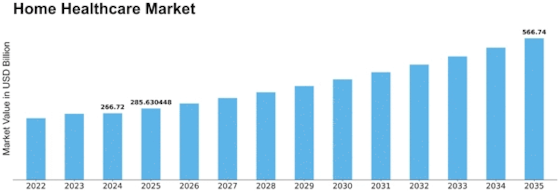

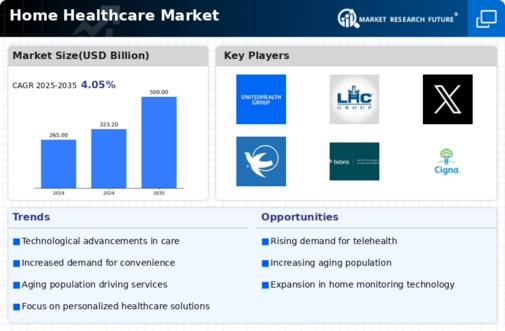
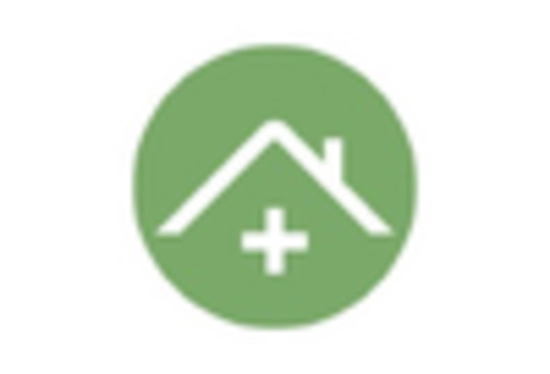

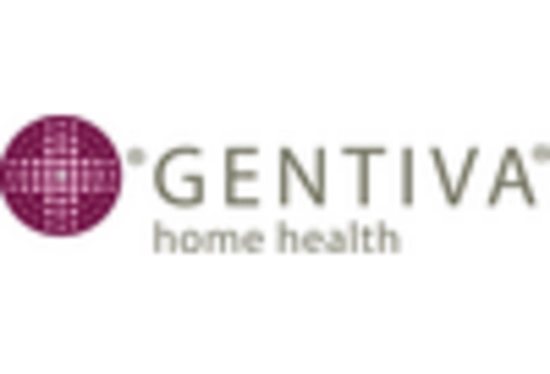
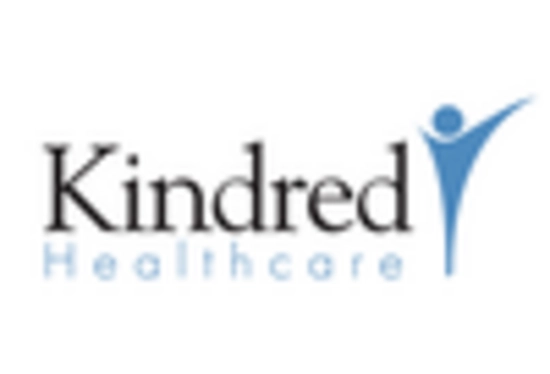
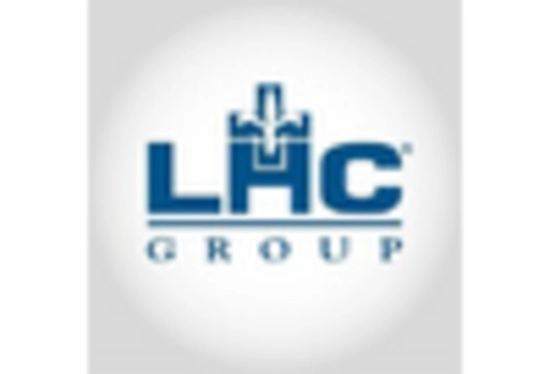
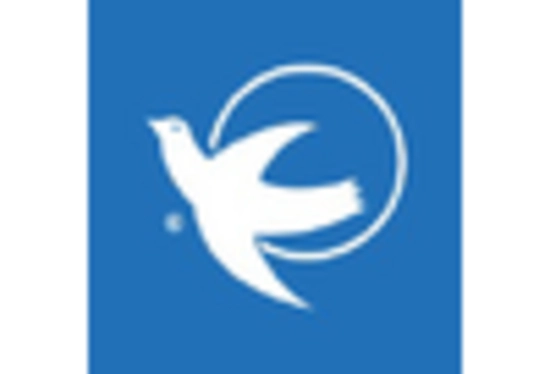









Leave a Comment